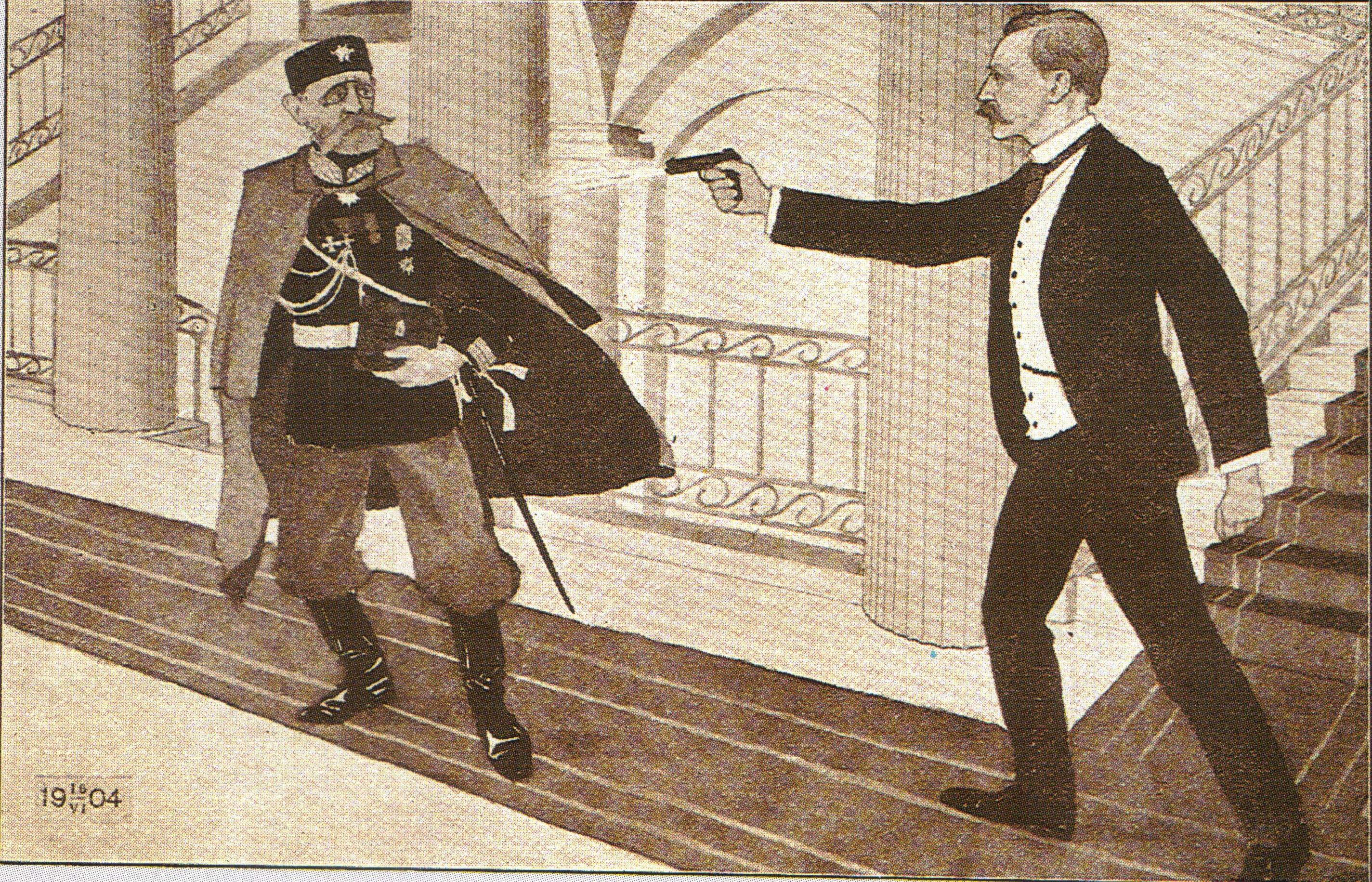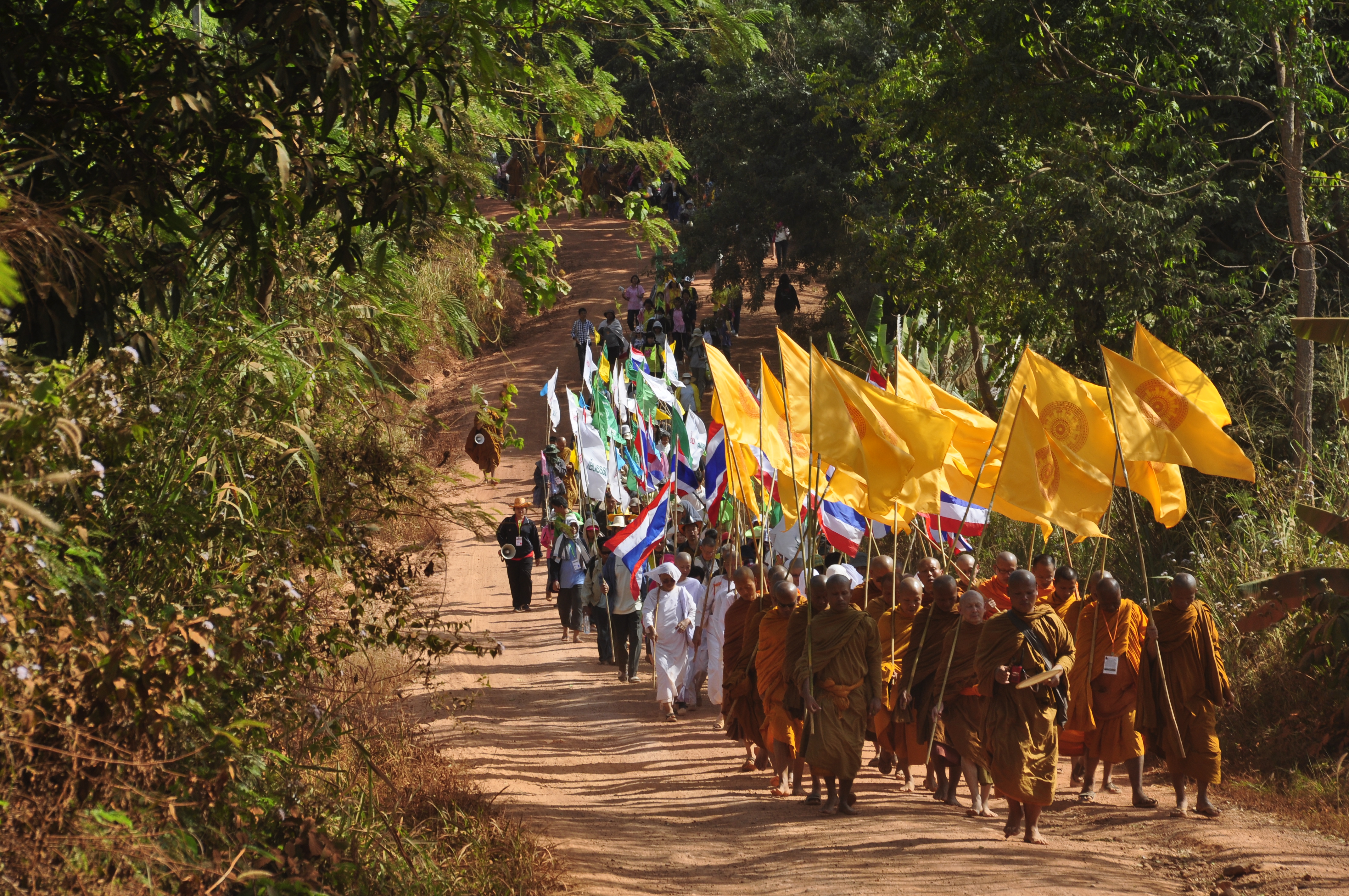|
Sam Bunthoeun
Sam Bunthoeun (1957 - 2003) was a Cambodian Buddhist monk who was active in restoring the religious tradition of meditation known as ''vipassana'' in the 1990s until he was fatally shot on February 6, 2003. He was "one of Cambodia's most prominent teachers of ''vipassana'' meditation." Biography Sam Bunthoeun was born close to Phnom Penh in Kandal province in 1957. He was ordained in 1980. During these years, Sam Bunthoeun may have been initiated to the traditional meditations techniques, as studied by Francois Bizot, which included esoteric teachings and master and disciple transmission, before the Khmer Rouge wiped them out. From 1976 to 1979, San Bunthoen was forcibly defrocked like almost all other monks in Cambodia. Along with Tep Vong, he was reordained as a monk in 1979. In 1995, the annual buddhist council formally validated the importance of vipassana meditation and called Sam Bunthoeun to propagate it from Phnom Penh. The latter settled at Wat Nuntamony in 1995 a ... [...More Info...] [...Related Items...] OR: [Wikipedia] [Google] [Baidu] |
Wat Langka
Wat Langka ( km, វត្តលង្កា, UNGEGN: , ALA-LC: , ) is a wat in Phnom Penh, Cambodia.It is one of the five ancient pagodas in Phnom Penh Phnom Penh (; km, ភ្នំពេញ, ) is the capital and most populous city of Cambodia. It has been the national capital since the French protectorate of Cambodia and has grown to become the nation's primate city and its economic, indus ... that was built in 1422. The construction of Dum Dong as a place of refuge (as a place of refuge) for the storage of the Trinity and as a meeting place for Khmer and Sri Lankan monks. As a reminder of this gathering, this pagoda was also called Wat Lanka. Wat Langka is located southwest of the Independence Monument, Sihanouk Blvd. and St. 51.Translated from Khmer Wikipedia Images File:Aerial_View_of_Wat_Langka_and_Independence_Monument.jpg, Aerial View of Wat Langka and Independence Monument References Buddhist temples in Phnom Penh {{Buddhist-temple-stub ... [...More Info...] [...Related Items...] OR: [Wikipedia] [Google] [Baidu] |
Assassinated Cambodian People
Assassination is the murder of a prominent or important person, such as a head of state, head of government, politician, world leader, member of a royal family or CEO. The murder of a celebrity, activist, or artist, though they may not have a direct role in matters of the state, may also sometimes be considered an assassination. An assassination may be prompted by political and military motives, or done for financial gain, to avenge a grievance, from a desire to acquire fame or notoriety, or because of a military, security, insurgent or secret police group's command to carry out the assassination. Acts of assassination have been performed since ancient times. A person who carries out an assassination is called an assassin or hitman. Etymology The word ''assassin'' may be derived from '' asasiyyin'' (Arabic: أَسَاسِيِّين, ʾasāsiyyīn) from أَسَاس (ʾasās, "foundation, basis") + ـِيّ (-iyy), meaning "people who are faithful to the foundat ... [...More Info...] [...Related Items...] OR: [Wikipedia] [Google] [Baidu] |
Phnom Penh Post
''The Phnom Penh Post'' ( km, ភ្នំពេញប៉ុស្តិ៍, ) is a daily English-language newspaper published in Phnom Penh, Cambodia. Founded in 1992 by publisher Michael Hayes and Kathleen O'Keefe, it is Cambodia's oldest English-language newspaper. The paper was initially published fortnightly as a full-color tabloid; in 2008 it increased frequency to daily publication and redesigned the format as a Berliner. ''The Phnom Penh Post'' is also available in Khmer. It previously published a weekend magazine, 7Days, in its Friday edition. Since July 2014, it has published a weekly edition on Saturdays called ''Post Weekend'', which was folded into the paper as a Friday supplement in 2017 and was discontinued in 2018. It has a staff of Cambodian and foreign journalists covering national news. The newspaper includes specific business, lifestyle and sports sections, and also prints a "Police Blotter", which has items related to crime translated from local Khmer-la ... [...More Info...] [...Related Items...] OR: [Wikipedia] [Google] [Baidu] |
FUNCINPEC
The National United Front for an Independent, Neutral, Peaceful and Cooperative Cambodia,; french: Front uni national pour un Cambodge indépendant, neutre, pacifique et coopératif commonly referred to as FUNCINPEC,, ; is a royalist political party in Cambodia. Founded in 1981 by Norodom Sihanouk, it began as a resistance movement against the People's Republic of Kampuchea (PRK) government. In 1982, it formed a resistance pact with the Coalition Government of Democratic Kampuchea (CGDK), together with the Khmer People's National Liberation Front (KPNLF) and the Khmer Rouge. It became a political party in 1992. FUNCINPEC was one of the signatories of the 1991 Paris Peace Accords, which paved the way for the formation of the United Nations Transitional Authority in Cambodia (UNTAC). The party participated in the 1993 general elections organised by UNTAC. It won the elections, and formed a coalition government with the Cambodian People's Party (CPP), with which it jointly head ... [...More Info...] [...Related Items...] OR: [Wikipedia] [Google] [Baidu] |
Member Of The European Parliament
A Member of the European Parliament (MEP) is a person who has been elected to serve as a popular representative in the European Parliament. When the European Parliament (then known as the Common Assembly of the European Coal and Steel Community, ECSC) first met in 1952, its members were directly appointed by the governments of member states from among those already sitting in their own national parliaments. Since 1979, however, MEPs have been elected by direct universal suffrage. Earlier European organizations that were a precursor to the European Union did not have MEPs. Each Member state of the European Union, member state establishes its own method for electing MEPs – and in some states this has changed over time – but the system chosen must be a form of proportional representation. Some member states elect their MEPs to represent a single national constituency; other states apportion seats to sub-national regions for election. They are sometimes referred to as delega ... [...More Info...] [...Related Items...] OR: [Wikipedia] [Google] [Baidu] |
Graham Watson
Sir Graham Robert Watson (born 23 March 1956) is a British Liberal Democrat politician who served as a Member of the European Parliament (MEP) for South West England from 1994 to 2014. Watson was the chairman of the Parliament's committee on citizens rights, justice and home affairs (1999–2002). He then served for seven and a half years as leader of the Liberal Group in the European Parliament, first as leader of the European Liberal Democrat and Reform Party Group (2002–2004) and then as leader of the new Alliance of Liberals and Democrats for Europe Group (2004–2009). From 2011 until 2015 he was the President of the Alliance of Liberals and Democrats for Europe Party. From 2015 to 2020 he was a UK Member on the European Economic and Social Committee. He is currently a Distinguished Visiting Fellow at the University of Toronto's Munk School of Global Affairs and Public Policy and a Visiting Scholar at Symbiosis University’s School of International Studies in Pune. E ... [...More Info...] [...Related Items...] OR: [Wikipedia] [Google] [Baidu] |
Luang Pu Sodh Candasaro
Luang Pu Sodh Candasaro (10 October 1884 – 3 February 1959), also known as Phramongkolthepmuni ( th, พระมงคลเทพมุนี), was a Thai Buddhist monk who served as the abbot of Wat Paknam Bhasicharoen from 1916 until his death in 1959. He founded the Thai Dhammakāya school in the early 20th century. As the former abbot of Wat Paknam Bhasicharoen, he is often called Luang Pu Wat Paknam, meaning 'the Venerable Father of Wat Paknam'. He became a well-known meditation master during the interbellum and the Second World War, and played a significant role in developing Thai Buddhism during that period. He is considered by the Dhammakaya tradition to have rediscovered ''Vijja Dhammakaya'', a meditation method believed to have been used by the Buddha himself. Since the 2000s, some scholars have pointed out that Luang Pu Sodh also played an important role in introducing Theravāda Buddhism in the West, a point previously overlooked. Biography Early life ... [...More Info...] [...Related Items...] OR: [Wikipedia] [Google] [Baidu] |
Dhammakaya Meditation
Dhammakaya meditation (also known as ''Sammā Arahaṃ'' meditation) is a method of Buddhist meditation developed and taught by the Thai meditation teacher Luang Pu Sodh Candasaro (1885–1959). In Thailand, it is known as ''vijjā dhammakāya'', which translates as 'knowledge of the dhamma-body'. The Dhammakaya meditation method is popular in Thailand and other parts of Southeast Asia, and has been described as a revival of ''samatha'' (tranquility) meditation in Thailand. The Dhammakaya tradition believes the method to be the same as the original method the Buddha used to attain enlightenment, which was lost and then rediscovered by Luang Pu Sodh in the 1910s. The most important aspect of the meditation method is the focus on the center of the body, which leads to the attainment of the '' Dhammakāya'', the Dhamma-body, found within every human being. Similar to other meditation traditions, the Dhammakaya tradition believes the meditation technique leads to the attainment o ... [...More Info...] [...Related Items...] OR: [Wikipedia] [Google] [Baidu] |
2003 Phnom Penh Riots
In January 2003, a Cambodian newspaper article falsely alleged that Thai actress Suvanant Kongying claimed that the Angkor Wat belonged to Thailand. Other Cambodian print and radio media picked up the report and furthered nationalistic sentiments, which resulted in riots in Phnom Penh on 29 January where the Thai embassy was burned and commercial properties of Thai businesses were vandalized. The riots reflect the fluid historical relationship between Thailand and Cambodia, as well as the economic, cultural and political factors involving the two countries. Background Historical Historically, the relationship between Siam (modern Thailand) and Cambodia has been extremely fluid, reflecting the region's division into city states rather than nation states. These city states were bound together into empires by more or less strong political, military and tributary ties. In the 14th century, the centre of Thai power passed from Sukhothai to the more southerly Ayutthaya, in territor ... [...More Info...] [...Related Items...] OR: [Wikipedia] [Google] [Baidu] |
Dhammayietra
The Dhammayietra ( km, ធម្មយាត្រា, "pilgrimage") is an annual peace walk in Cambodia that originated during the historic repatriation of refugees along the Thai border camps during the United Nations monitored transition to democracy in 1992. The Khmer word "dhammayietra", derived from Pāli, ''dhamma'' (dharma) and Sanskrit ''yātrā'' ("a walk", "procession"), means "pilgrimage" but is often translated as "pilgrimage of truth". The peace walk takes place in early May and usually involves an assemblage of Buddhist monks and laity who travel various routes in Cambodia. The assemblage is often greeted by villagers along the route who expect a blessing (''teuk mon'' km, ទឹកមន្ត or blessing with lustral water). The founder of the Dhammayietra was Maha Ghosananda ( km, សម្តេចព្រះមហាឃោសានន្ទ), a Buddhist monk who ranked among the higher echelons of the Cambodian sangha; he led the first Dhammayietra as he ... [...More Info...] [...Related Items...] OR: [Wikipedia] [Google] [Baidu] |
Preah Maha Ghosananda
Maha Ghosananda (full title Samdech Preah Maha Ghosananda - km, សម្តេចព្រះមហាឃោសានន្ទ; pi, Mahāghosānanda; May 23, 1913 – March 12, 2007) was a highly revered Cambodian Buddhist monkAsiaweek August 31, 1999 at in the tradition, who served as the Patriarch (Sangharaja) of Cambodian Buddhism during the period and post-communist transit ... [...More Info...] [...Related Items...] OR: [Wikipedia] [Google] [Baidu] |




